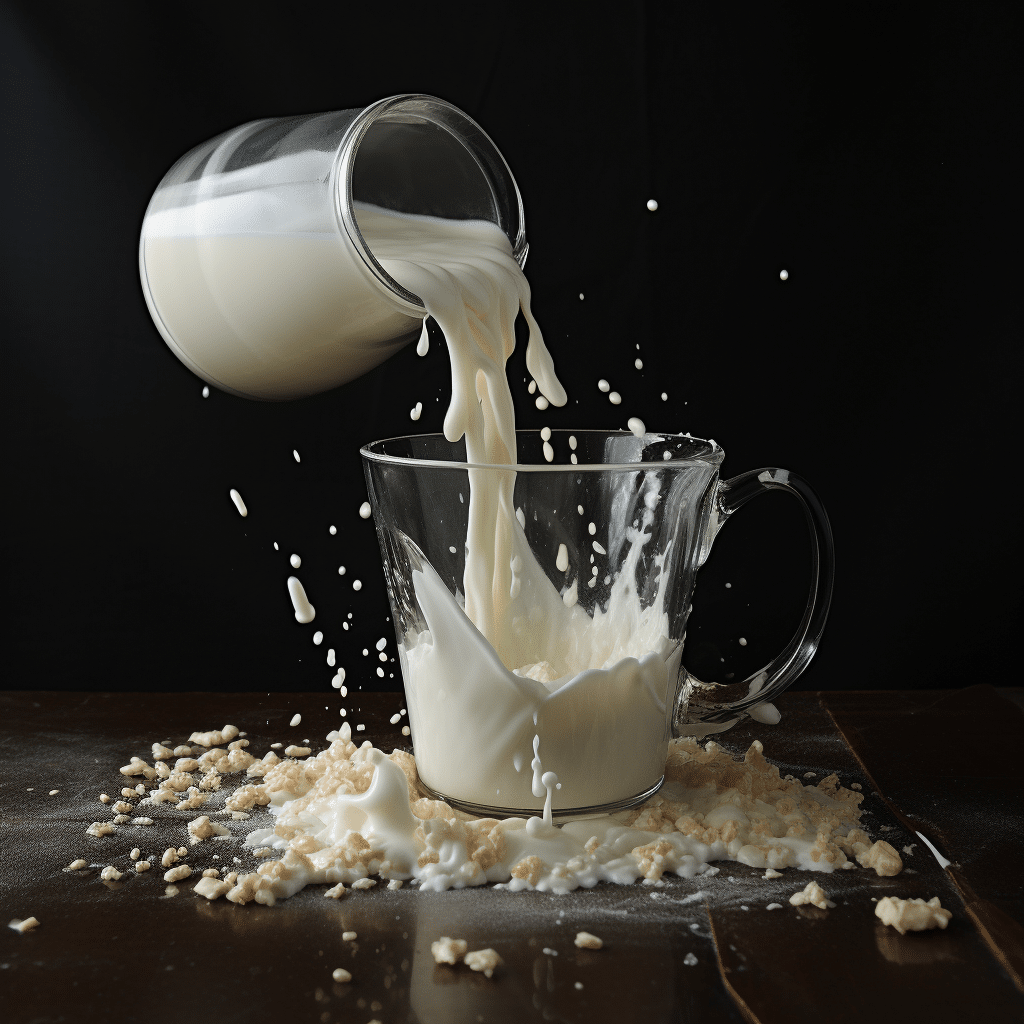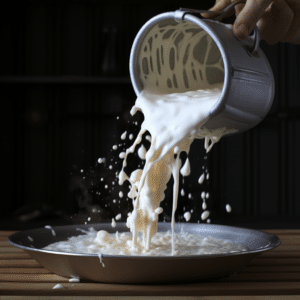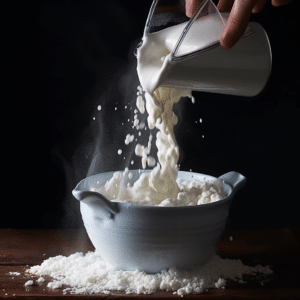
Cooking With Milk Past the Expiration Date
Cooking with Expired Milk Do you have a bottle of milk left over from the Sunday roast? Or is it time to get some more dairy products from the supermarket? The latest research has highlighted the different effects that cooking with milk past the use by date can have on your health.
Basically, consuming spoiled milk can positively impact your health as it is rich in nutrients like calcium and magnesium. However, its consumption should not exceed the limit, as it can trigger other negative health effects.
Spoiled milk can be used as an ingredient in baking, where it can be used as a leavening agent as well as add sourness to pancakes and yogurts. This article digs deep into expired milk, its uses, benefits, and how it fits well with various cooking needs. Keep reading.

Can You Cook with Expired Milk?
Turned off by the foul smell and taste of spoiled milk, many consumers simply toss their spoiled milk rather than trying to find a use for it. However, this is not always a good idea. You can still use spoiled milk for cooking. In fact, it’s a great way to use up the last of your milk if you’ve got some left over.
Normally, cooking with expired foods is perfectly safe; the only thing you need to worry about is germs and bacteria growing on them (usually killed by cooking). This isn’t a problem unless you have reason to believe that they might be bad for your health (like if they have mold or something like that).
Basically, the best way to use expired milk is in baked goods like bread and cakes, where the milk will naturally rise and create a leavening effect that will help the bread rise. You can also make a simple pancake batter from the milk by adding enough flour to make it a better consistency.
How To Tell If Your Milk is Past Expiration Date
You’re not alone if you’re looking for an easy way to tell if your milk is past its expiration date and still safe for consumption. But what can you do if the expiration date printed on your carton is a little blurry?
Here are five signs that its time has come:
Bad smell
It should smell sour or slightly rancid — but not so strong that it makes you want to throw up. If it smells rotten, don’t even think about drinking it — there could be bacteria in there that could make you sick.
The texture is off
When the milk starts to go off, it loses its ability to separate into curds and whey (the clear liquid). Over time, this can cause the final product’s texture to become grainy or rubbery — which will lead to lumpy yogurt or sour cream.
You might also notice that the color becomes duller over time.
It’s curdled
If you pour milk into a bowl and stir it with a spoon, the consistency will change from thick and creamy to watery and thin. This means that the milk composition has changed simply because of bacteria build-up.
Similarly, if you pour milk into a strainer and let it sit for about 30 seconds, the same thing happens: The milk separates into two layers — one layer being the curds (the protein molecules in milk) and the other being whey (the liquid portion of the mixture).
If you look at the bottom of your container or bowl, there should be an oily or yellowish layer at the bottom. This is whey, which generally indicates that your milk has gone bad. All these are clear indications that your milk is past its expiration date.
The taste changes
The taste of milk also changes over time, especially when it’s past its expiration date and bacteria have started to grow in the carton or container. You might notice a slightly sour taste or a metallic aftertaste — either way, this can indicate something is wrong with your milk.
The color changes
The color of milk also changes over time, especially when it’s been exposed to heat or light (like sunlight). If you notice any discoloration or haziness in your milk after opening, this could indicate something is wrong with your milk.
Beneficial Uses of Spoiled Milks
Spoiled milk is a product that has been reduced to its most basic form: water and milk proteins. The water is often cloudy because it contains bacteria, mold spores, and other organisms’ nutrients.
Here are some of its beneficial uses:
The most obvious use of spoiled milk is to make yogurt. Yogurt is a thick, creamy food with protein and calcium. Yogurt can be made from any milk, whether it’s fresh or sour. The bacteria in the milk fermenting process also produce lactic acid, which gives yogurt its tangy flavor.
Yogurt is often used as a substitute for milk in dishes where a more liquid consistency would be desired. For example, some people prefer plain Greek-style yogurt over regular yogurt because it has a thicker texture and flavor. It’s also commonly used as an ingredient in homemade ice cream and whipped cream recipes.
Similarly, you can use it as a cooking ingredient. Expired milk can be used as a cooking ingredient because it has less fat and calories than fresh milk. It also has more calcium than its fresh counterpart, making it an ideal ingredient for making recipes like pancakes or cookies that heavily rely on these nutrients.

It contains added nutrients. The natural vitamins B1 and B2 are easily destroyed during pasteurization. However, plenty of healthy compounds in spoiled milk still provide significant health benefits when consumed regularly (such as calcium and vitamin D).
And finally, the price of expired milk can be up to 50% lower than fresh milk. Especially when you compare the cost per liter. This means you are getting more value for your money when using spoiled milk rather than purchasing it.
Bottom Line
Cooking with Expired Milk is safe to consume for four to five days after the sell-by date, but it may have lost some fresh flavor. Use your senses: Look for the slightest yellowing or change in the consistency of the milk or a sour smell.